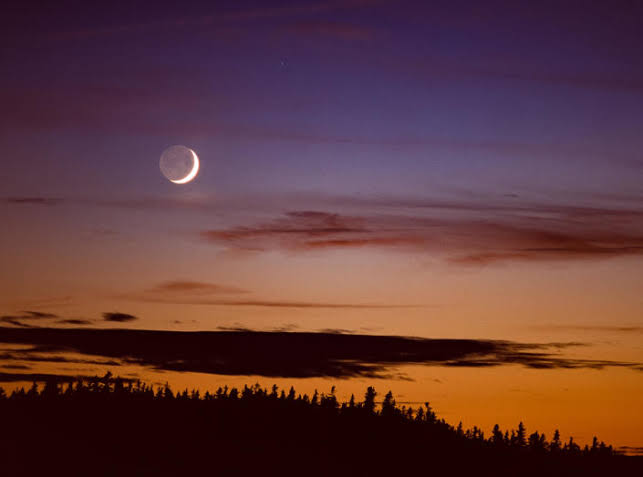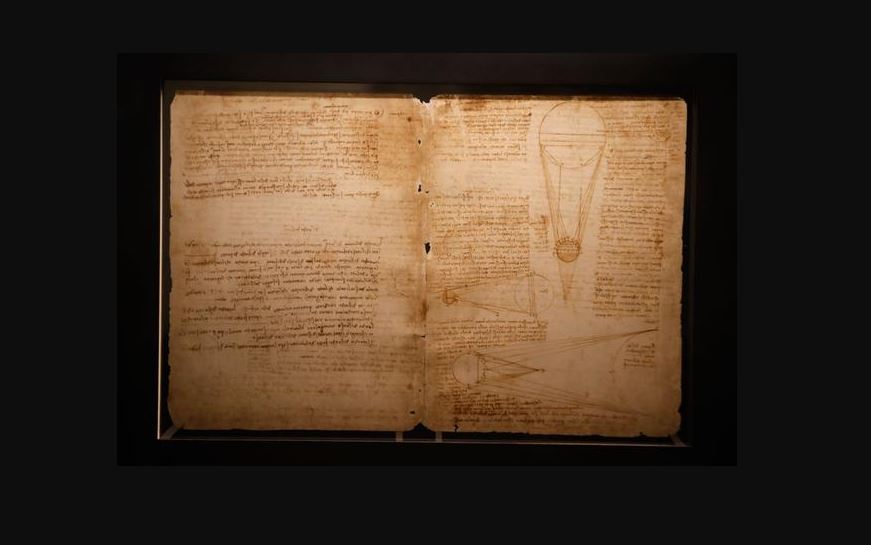How To Witness The "Da Vinci Glow" Illuminating The Crescent Moon This Week
How to witness the "Da Vinci Glow" illuminating the crescent moon this week as observers of the night sky may notice a subtle, ethereal radiance enveloping the moon. Dubbed the "Da Vinci glow," this phenomenon pays homage to Leonardo Da Vinci, the renowned artist and inventor.
Author:Karan EmeryReviewer:Daniel JamesMay 17, 202394.3K Shares1.6M Views

How to witness the "Da Vinci Glow" illuminating the crescent moon this weekas observers of the night sky may notice a subtle, ethereal radiance enveloping the moon. Dubbed the "Da Vinci glow," this phenomenon pays homage to Leonardo Da Vinci, the renowned artist and inventor. Apart from his artistic pursuits, Da Vinci delved into unraveling the enigma of what was previously referred to as "Earthshine," as per NASA.
The "Da Vinci glow" phenomenon is observed exclusively when a crescent moon is positioned low on the horizon during sunrise or sunset. During this event, the illuminated crescent appears radiant, while the unlit side is visible as a dim haze.
It's important to note that the moon itself does not generate this glow. Instead, it is produced by the Earth, whose light can illuminate the night sky with a brightness 50 times greater than a full moon, according to NASA.
How Did Leonardo Da Vinci Find Out What Caused The Glow?
In the 16th century, Leonardo da Vinci embarked on unraveling the enigma of Earthshine, as revealed by NASA. His exploration of this ethereal radiance is depicted in a drawing found in his notebooks and immortalized in the "Codex Leicester," a compilation of his scientific writings.
During Da Vinci's time, the understanding of the solar system was incomplete, as NASA explains. The concept of the sun occupying the center of the solar system wouldn't be published for another two decades, and lunar exploration had not yet taken place. Consequently, knowledge regarding the sun's proximity to Earth was limited.
One page in the "Codex Leicester" is titled "Of the Moon: No Solid Body is Lighter Than Air," according to NASA. Within this entry, Da Vinci proposed several ideas, including the notion that the moon possesses an atmosphere and oceans. While his hypothesis about the moon's atmosphere was accurate, subsequent NASA missions disproved his belief in lunar oceans. Additionally, Da Vinci posited that the moon functioned as a reflector of light.
Building upon this information, Da Vinci presented a hypothesis: Earthshine's ghostly glow emanated from sunlight bouncing off Earth's oceans and striking the moon. NASA confirms that Da Vinci was correct in the general sense of the phenomenon. However, further research revealed that the primary source of the glow was not sunlight reflecting off Earth's oceans, but rather light reflected off clouds.

How Can I See The Da Vinci Glow?
According to Live Science, you can see glow when a slim crescent moon is close to the horizon during the first or last few days of its orbit. This week, Thursday morning, May 17, before sunrise is a good time to observe this phenomenon. The best days to see it after sunset are next week on Sunday, May 21; Monday, May 22; and Tuesday, May 23. Look at the sky in the hour following sunset for the best view.
Earthshine is generally brightest between April and June, as stated by NASA. You don't need special equipment to spot the glow; it's best seen with the naked eye. While a small telescope or binoculars can be helpful, they are not necessary.

Karan Emery
Author
Karan Emery, an accomplished researcher and leader in health sciences, biotechnology, and pharmaceuticals, brings over two decades of experience to the table. Holding a Ph.D. in Pharmaceutical Sciences from Stanford University, Karan's credentials underscore her authority in the field.
With a track record of groundbreaking research and numerous peer-reviewed publications in prestigious journals, Karan's expertise is widely recognized in the scientific community.
Her writing style is characterized by its clarity and meticulous attention to detail, making complex scientific concepts accessible to a broad audience. Apart from her professional endeavors, Karan enjoys cooking, learning about different cultures and languages, watching documentaries, and visiting historical landmarks.
Committed to advancing knowledge and improving health outcomes, Karan Emery continues to make significant contributions to the fields of health, biotechnology, and pharmaceuticals.

Daniel James
Reviewer
Daniel James is a distinguished gerontologist, author, and professional coach known for his expertise in health and aging.
With degrees from Georgia Tech and UCLA, including a diploma in gerontology from the University of Boston, Daniel brings over 15 years of experience to his work.
His credentials also include a Professional Coaching Certification, enhancing his credibility in personal development and well-being.
In his free time, Daniel is an avid runner and tennis player, passionate about fitness, wellness, and staying active.
His commitment to improving lives through health education and coaching reflects his passion and dedication in both professional and personal endeavors.
Latest Articles
Popular Articles